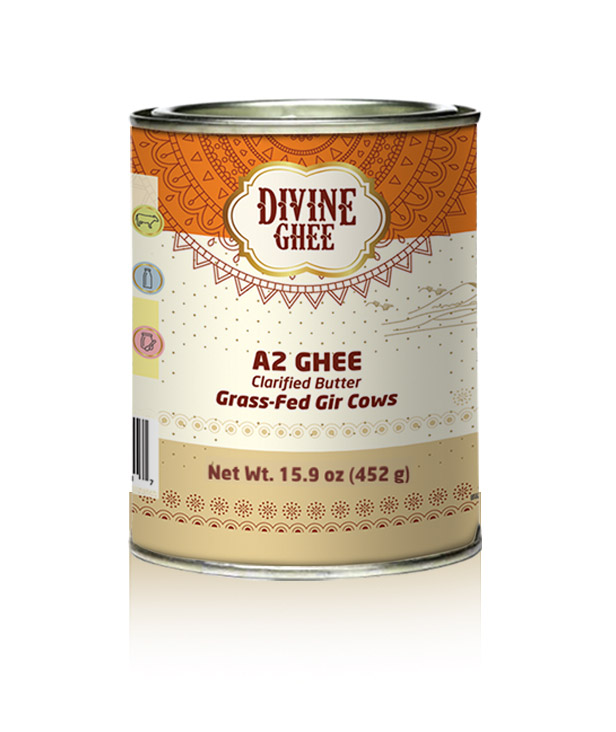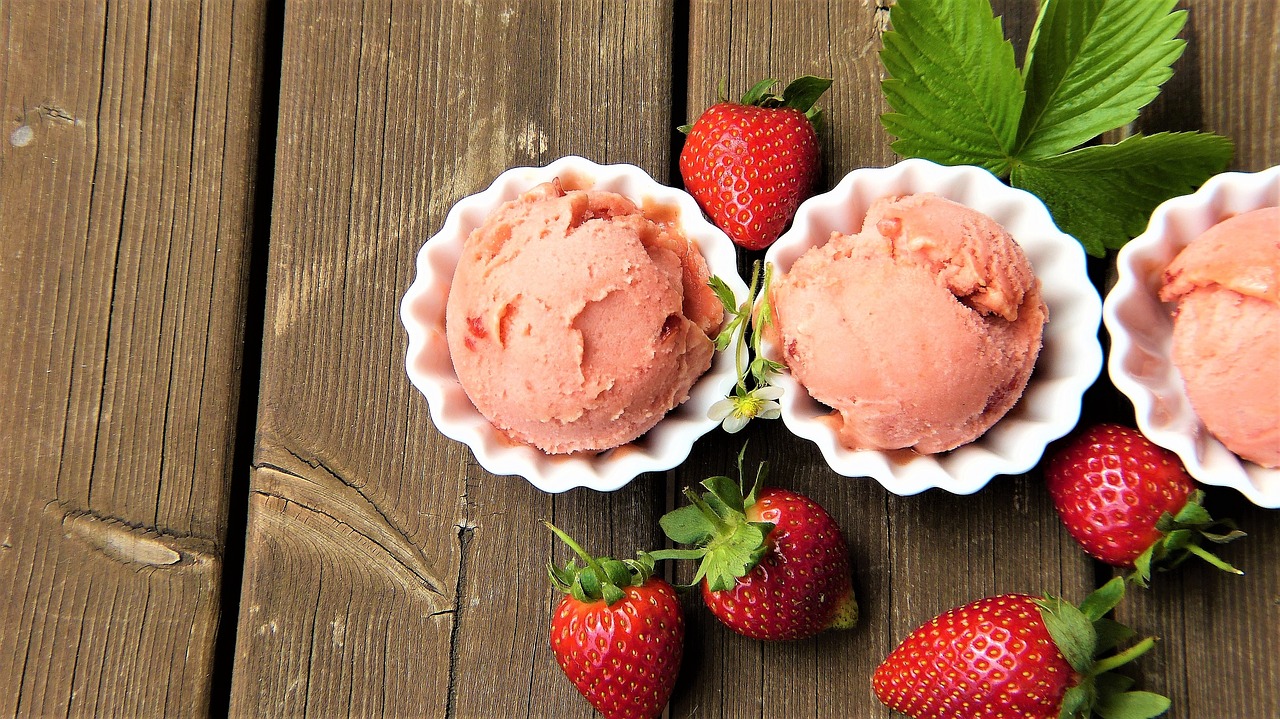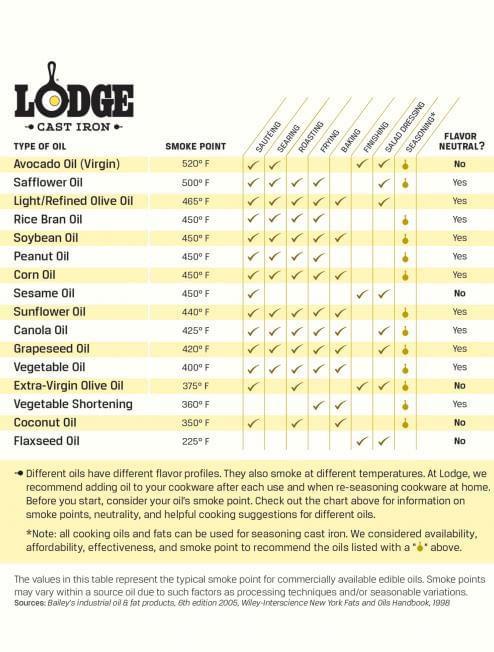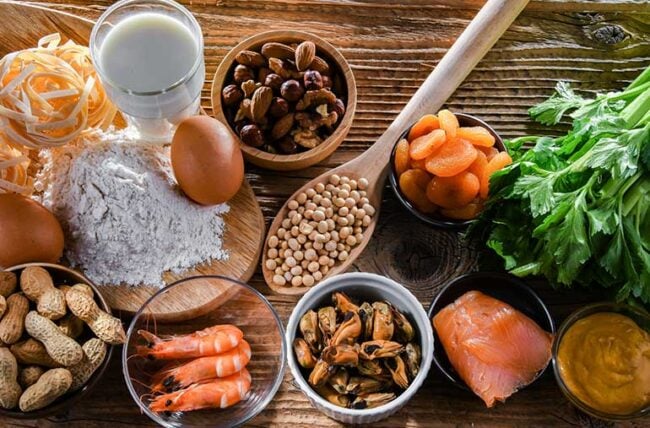Introduction
Ghee, a type of clarified butter, has been cherished in traditional Indian cuisine for centuries. Not only does it add a delightful nutty flavor to dishes, but it also offers a range of health benefits that have made it increasingly popular worldwide. In this article, we will explore the many advantages of ghee, from its rich nutrient profile to its potential therapeutic properties.
Ghee, often referred to as “liquid gold” in traditional Indian cuisine, holds a special place in culinary and holistic traditions that span centuries. Its unique characteristics and multifaceted advantages have transcended borders, making it a beloved ingredient worldwide. Let’s embark on a journey to discover the myriad benefits and qualities that make ghee a remarkable addition to both your kitchen and your well-being:
1. Rich Nutrient Profile: Ghee is a nutritional powerhouse, teeming with essential vitamins such as vitamin A, vitamin E, and vitamin K2. Additionally, it boasts a wealth of healthy fats, including conjugated linoleic acid (CLA), butyric acid, and omega-3 fatty acids. These nutrients play crucial roles in promoting overall health.
2. Flavorful Enhancements: Beyond its nutritional value, ghee is renowned for its ability to elevate the flavors of dishes. Its nutty, slightly sweet aroma adds a delightful depth to both savory and sweet creations. Whether used as a cooking medium, drizzled over vegetables, or incorporated into baked goods, ghee’s flavor-enhancing qualities are truly unparalleled.
3. High Smoke Point: Ghee is well-known for its high smoke point, which means it can withstand higher cooking temperatures without breaking down or releasing harmful compounds. This makes it an excellent choice for sautéing, frying, or deep frying, as it imparts a rich, buttery flavor without the risk of burning.
4. Lactose-Free and Shelf-Stable: Through the clarifying process, ghee becomes virtually lactose-free and safe for individuals with lactose intolerance. It is also naturally devoid of water content, rendering it highly shelf-stable. Ghee can be stored at room temperature for extended periods without spoiling, making it a convenient pantry staple.
5. Potential Therapeutic Properties: Ghee’s potential therapeutic properties have garnered increasing attention. Butyric acid, a short-chain fatty acid found in ghee, is known for its anti-inflammatory and gut-nourishing effects. Ghee is believed to support digestive health, enhance nutrient absorption, and contribute to a balanced microbiome.
6. Ayurvedic Significance: In Ayurveda, the traditional system of medicine in India, ghee holds a revered status. It is considered sattvic, meaning it promotes clarity, balance, and harmony within the body and mind. Ghee is used in Ayurvedic practices, such as Abhyanga (oil massage) and Panchakarma (detoxification), for its therapeutic benefits.
7. Versatility: Ghee’s versatility extends beyond the kitchen. It can be used topically for skincare, as a natural lip balm, or as a carrier oil for Ayurvedic herbal remedies. Its uses are as diverse as the cultures that have embraced it.
8. Holistic Well-Being: Incorporating ghee into your diet can be a holistic approach to well-being. Its nourishing qualities not only satisfy the palate but also support vital bodily functions, making it a choice that aligns taste and health.
In this article, we will delve deeper into each facet of ghee’s allure, from its history and culinary applications to its potential therapeutic uses and how to incorporate it into your daily life. Join us on this exploration of ghee—a cherished culinary and wellness treasure that transcends time and borders.
Looking for more insights? You’ll find them right here in our extended coverage: The effect of ghee (clarified butter) on serum lipid levels and …
Before diving into the health benefits, let’s briefly understand how ghee is made. Ghee is produced by heating butter to separate its components. During this process, the water content evaporates, and the milk solids settle at the bottom. What remains is a golden, clear liquid that consists mainly of pure butterfat.
Certainly, delving into the process of ghee production not only provides insight into its unique qualities but also enhances our appreciation of its health benefits:
Ghee Production as an Art: Crafting ghee is often considered an art form in itself. The process involves a combination of precision and patience, as it transforms ordinary butter into a substance treasured for centuries in culinary traditions and holistic wellness practices.
Concentration of Flavor and Nutrients: The transformation of butter into ghee is a metamorphosis of sorts. As the butter melts and heats, the water content is vaporized, leaving behind pure, clarified butterfat. Additionally, the milk solids, which contain lactose and casein (milk proteins), are separated and removed. This meticulous process not only enhances the flavor but also concentrates the beneficial nutrients found in butterfat.
Enhanced Flavor Profile: The removal of water and milk solids imparts a distinctive flavor and aroma to ghee. Its rich, nutty, and slightly caramelized taste adds depth to a wide range of dishes, making it a favorite ingredient in various cuisines worldwide. This unique flavor profile elevates the culinary experience and has made ghee a versatile and beloved ingredient in both savory and sweet dishes.
High Smoke Point: One of the remarkable qualities of ghee, stemming from its purity, is its high smoke point. Unlike regular butter, which can burn at high temperatures due to its milk solids, ghee is more stable. This makes it an ideal cooking fat for sautéing, frying, and even deep-frying. It can withstand heat without breaking down or producing harmful compounds, ensuring that the nutritional benefits are preserved during cooking.
Lactose and Casein-Free: Ghee is typically well-tolerated by individuals who are lactose intolerant or sensitive to dairy proteins like casein. The clarification process removes these components, leaving behind a product that is virtually free of lactose and casein. This makes ghee a viable option for those seeking a dairy-free alternative.
Rich Nutritional Profile: Ghee boasts a rich nutritional profile, with a concentration of fat-soluble vitamins like vitamins A, D, E, and K. These vitamins play vital roles in various bodily functions, including immune support, bone health, and antioxidant protection. Additionally, ghee contains conjugated linoleic acid (CLA) and butyric acid, both of which have been associated with potential health benefits.
Ayurvedic and Holistic Significance: Beyond its culinary appeal, ghee holds a significant place in Ayurveda, an ancient system of medicine and wellness. Ayurvedic practitioners often use ghee for its potential to balance doshas (individual constitutions) and promote overall well-being. Its holistic importance extends to practices like oil pulling, a technique for oral hygiene, and abhyanga, a self-massage ritual.
In conclusion, the process of creating ghee not only transforms butter into a flavorful and versatile culinary ingredient but also concentrates its beneficial nutrients. Understanding the intricacies of ghee production enhances our appreciation for this golden elixir, as we explore its numerous health benefits and its cultural significance in both traditional and modern culinary practices.
Looking for more insights? You’ll find them right here in our extended coverage: Ghee: Is It Good for You? Pros and Cons, Nutrition Information, and …

Ghee is primarily composed of saturated fats, but not all saturated fats are created equal. Ghee contains high levels of beneficial short-chain and medium-chain fatty acids. One such fatty acid is butyrate, which is known for its anti-inflammatory properties and potential to support digestive health.
Indeed, while ghee is predominantly composed of saturated fats, it stands apart from the common perception of saturated fats as detrimental to health. It’s essential to recognize that not all saturated fats are created equal, and ghee boasts a unique composition that sets it apart in the realm of culinary fats.
Short-Chain and Medium-Chain Fatty Acids:
What makes ghee particularly distinctive is its high content of short-chain and medium-chain fatty acids (SCFAs and MCFAs). These types of fatty acids differ significantly from the long-chain fatty acids found in many saturated fats, including those found in some animal products. It’s this distinction that renders ghee a potentially healthful choice when consumed in moderation.
The Power of Butyrate:
One of the standout components in ghee is butyric acid, which is a short-chain fatty acid with remarkable health benefits. Butyrate is renowned for its multifaceted advantages, particularly in the context of digestive health and inflammation control.
1. Anti-Inflammatory Properties: Butyrate, as found in ghee, is celebrated for its potent anti-inflammatory properties. It plays a crucial role in modulating the body’s immune response and helps regulate inflammation in the gut. By soothing the intestinal lining and reducing inflammation, butyrate may contribute to alleviating symptoms associated with various digestive disorders, such as irritable bowel syndrome (IBS) and inflammatory bowel disease (IBD).
2. Gut Health Support: Butyrate acts as a source of energy for the cells lining the colon, known as colonocytes. These cells rely on butyric acid for nourishment and energy, ultimately contributing to the maintenance of a healthy gut lining. A robust gut lining is essential for efficient nutrient absorption, waste elimination, and overall digestive wellness.
3. Potential Immune Benefits: Emerging research suggests that butyrate may also play a role in supporting the immune system. It can influence immune cell function and may help the body better respond to external challenges, including infections.
In Conclusion:
The presence of beneficial short-chain and medium-chain fatty acids, notably butyrate, sets ghee apart from other saturated fats. While ghee should be consumed in moderation due to its calorie density, it offers the potential for culinary enjoyment with added health benefits. When incorporated into a well-balanced diet, ghee can be a flavorful addition that contributes positively to digestive health and overall well-being. As with any dietary choice, individual preferences and needs should be taken into account, but ghee’s unique composition certainly makes it a noteworthy option for those seeking both flavor and potential health benefits in their culinary choices.
Should you desire more in-depth information, it’s available for your perusal on this page: Ghee: Is It Healthier Than Regular Butter?

Because the milk solids are removed during the clarifying process, ghee is nearly lactose-free and safe for most individuals with lactose intolerance. It also lacks casein, a common allergenic protein found in dairy.
nullTo expand your knowledge on this subject, make sure to read on at this location: Ghee: Is It Good for You? Pros and Cons, Nutrition Information, and …

Ghee has a high smoke point, around 450°F (232°C), which means it can be used for high-temperature cooking methods like frying and sautéing without breaking down or producing harmful free radicals. This makes it a safer alternative to many cooking oils.
The impressive high smoke point of ghee, standing steadfast at around 450°F (232°C), is a culinary virtue that elevates it to the status of a kitchen champion. This exceptional quality means that ghee can gracefully endure the intense heat of high-temperature cooking methods without undergoing the unfortunate breakdown that can plague lesser fats and oils.
Imagine the sizzle and aroma of ingredients meeting a hot, sizzling pan. When ghee takes center stage in the culinary performance, it transforms the kitchen into a sanctuary of flavors and textures. Whether you’re searing a perfectly marbled steak to caramelized perfection or sautéing a medley of vibrant vegetables for a stir-fry, ghee stands as your unwavering ally.
What sets ghee apart is its remarkable stability under heat. It doesn’t smoke, scorch, or produce harmful free radicals, as many other cooking fats might when exposed to high temperatures. This characteristic ensures that your culinary creations not only taste exquisite but are also prepared with a degree of safety that’s paramount in the kitchen.
Moreover, ghee’s high smoke point isn’t just about safety; it’s also about preserving the integrity of flavors. When you cook with ghee, you’re not just preventing the breakdown of the fat; you’re also enhancing the natural taste of your ingredients. The result is dishes that boast rich, complex flavors and textures that are nothing short of delightful.
In comparison to other cooking oils that may not fare as well under high heat, ghee emerges as a safer and more reliable choice. It eliminates the concerns of smoke points being exceeded, unwanted flavors being imparted to your food, or unhealthy compounds being formed.
Whether you’re indulging in the pleasures of frying, sautéing, or any high-heat cooking method, ghee’s steadfast performance in the kitchen allows you to explore the boundaries of culinary creativity without compromising on taste or safety. It’s a culinary ally that empowers you to confidently embark on culinary adventures, knowing that your dishes will shine with the brilliance of perfectly cooked ingredients and flavors that sing harmoniously in every bite.
Don’t stop here; you can continue your exploration by following this link for more details: Butter: Are There Health Benefits?

Ghee is a source of fat-soluble vitamins such as A, D, E, and K. These vitamins are essential for various bodily functions, including immune support, bone health, and skin health. Ghee can act as a carrier for these vitamins, aiding their absorption in the body.
Indeed, ghee offers a treasure trove of fat-soluble vitamins—A, D, E, and K—that are vital for overall health and well-being. These vitamins, known for their role in various essential bodily functions, are seamlessly integrated into ghee, making it a nutritional powerhouse.
Vitamin A: Ghee is rich in vitamin A, a nutrient critical for maintaining healthy vision, a robust immune system, and proper skin health. This vitamin supports the growth and repair of skin tissues and mucous membranes, making ghee a valuable addition to your diet for maintaining radiant skin.
Vitamin D: Often referred to as the “sunshine vitamin,” vitamin D plays a fundamental role in bone health by aiding the absorption of calcium. Ghee’s vitamin D content contributes to strong bones and teeth and is especially beneficial in regions with limited sun exposure.
Vitamin E: Ghee boasts a significant vitamin E content, which serves as a potent antioxidant. Vitamin E helps protect cells from oxidative damage, supports skin health, and plays a role in immune function. Ghee’s inclusion of vitamin E bolsters its nutritional value.
Vitamin K: Vitamin K is essential for blood clotting and bone metabolism. Ghee’s contribution of vitamin K helps ensure these vital functions operate effectively, promoting both cardiovascular health and bone density.
One unique advantage of ghee is its ability to act as a carrier for these fat-soluble vitamins. The lipophilic (fat-loving) nature of these vitamins aligns perfectly with ghee’s composition. When consumed together, ghee can enhance the absorption of these vitamins in the body, maximizing their availability for various physiological processes.
Moreover, ghee’s natural richness and depth of flavor make it a delightful addition to a wide range of dishes. Whether you drizzle it over roasted vegetables, use it as a cooking fat for stir-fries, or incorporate it into your morning oatmeal, ghee effortlessly infuses your meals with a rich, nutty taste while delivering these essential vitamins.
Incorporating ghee into your diet not only elevates the flavor of your dishes but also ensures that you’re reaping the nutritional benefits of these fat-soluble vitamins. It’s a delicious and nourishing way to support your immune system, bone health, and skin vitality. So, as you savor the taste of ghee, know that you’re also indulging in a natural source of these essential vitamins that contribute to your overall well-being.
Should you desire more in-depth information, it’s available for your perusal on this page: Benefits of Ghee Butter – Tunnel Marathons

The butyric acid in ghee is believed to support the health of the gut lining. It can provide a source of fuel for the cells in the intestinal lining, aiding in their repair and maintenance. This is especially beneficial for individuals with digestive disorders like irritable bowel syndrome (IBS) and leaky gut syndrome.
The presence of butyric acid in ghee underscores its potential to be a valuable ally in promoting the well-being of the gut lining—a crucial element of digestive health. Butyric acid is a short-chain fatty acid with remarkable properties that extend beyond its contribution to flavor; it plays a pivotal role in nurturing the delicate ecosystem within our intestines.
A Source of Nutrient-Rich Fuel: Within the intestinal lining, the cells are in a perpetual state of growth, repair, and maintenance. Butyric acid serves as a vital source of energy for these enterocytes, the specialized cells that form the lining of the gut. By providing this nutrient-rich fuel, ghee aids in fortifying the intestinal barrier, enhancing its resilience and integrity.
Nurturing a Fragile Balance: For individuals grappling with digestive disorders such as irritable bowel syndrome (IBS) or leaky gut syndrome, the health of the gut lining is often compromised. In such cases, the presence of butyric acid can be especially beneficial. It supports the healing process of the intestinal cells, helping to restore their functionality and reinforcing the protective barrier of the gut.
Addressing Inflammation: Butyric acid also exhibits anti-inflammatory properties, which can be invaluable for individuals with digestive issues. Inflammation often accompanies conditions like IBS and leaky gut syndrome, contributing to discomfort and exacerbating symptoms. Butyric acid’s ability to mitigate inflammation in the gut can provide much-needed relief and a pathway to healing.
Balancing the Microbiome: Furthermore, butyric acid has a positive influence on the gut microbiome. It encourages the growth of beneficial bacteria, such as Bifidobacteria and Lactobacilli, while discouraging the proliferation of harmful microbes. This balance within the microbiome is essential for digestive health and overall well-being.
A Holistic Approach: It’s important to note that while butyric acid in ghee holds promise for supporting gut health, it is just one piece of the puzzle. A holistic approach to digestive wellness also involves dietary choices, hydration, stress management, and potential consultation with healthcare providers or registered dietitians. Ghee can be a valuable component of this holistic strategy.
In conclusion, ghee’s butyric acid content represents a potential boon for digestive health, particularly for individuals navigating conditions like IBS or leaky gut syndrome. Its ability to nurture and fortify the gut lining, address inflammation, and balance the microbiome underscores its place as a potential ally in promoting digestive well-being. However, as with any dietary intervention, individual responses may vary, and consulting with a healthcare provider is advisable, especially for those with specific digestive concerns.
To delve further into this matter, we encourage you to check out the additional resources provided here: Ghee, A Nutrient-Rich Superfood – Bali Buda

Ghee contains antioxidants and anti-inflammatory compounds. Some studies suggest that ghee’s anti-inflammatory properties may help reduce the risk of chronic diseases associated with inflammation, such as heart disease and diabetes.
nullShould you desire more in-depth information, it’s available for your perusal on this page: Ghee: Is It Good for You? Pros and Cons, Nutrition Information, and …

Contrary to the misconception that all fats lead to weight gain, the healthy fats in ghee can actually support weight management by promoting a feeling of satiety. When used in moderation, ghee can be part of a balanced diet.
The notion that all fats contribute to weight gain is a common misconception that has cast an unfair shadow over the healthy fats found in ghee. In reality, these fats can serve as valuable allies in the quest for effective weight management, offering a sense of satiety and satisfaction that can be a boon for those seeking to balance their diets.
Ghee’s role in weight management is underpinned by its unique composition. It contains a higher concentration of healthy monounsaturated and polyunsaturated fats compared to saturated fats. These heart-healthy fats play a crucial role in creating a feeling of fullness and satisfaction when incorporated into meals.
When you consume ghee in moderation, its healthy fats send signals to your brain that you’ve had enough to eat, helping to curb overeating and unnecessary snacking. This satiating effect can be especially beneficial for individuals looking to control their calorie intake and maintain a healthy weight.
Furthermore, ghee’s richness and depth of flavor can elevate the taste of dishes, making them more enjoyable and satisfying. When your meals are satisfying on both a sensory and satiety level, you’re less likely to feel deprived or seek out additional snacks or treats.
However, it’s important to emphasize the importance of moderation in incorporating ghee into your diet. While it can support weight management when used wisely, excessive consumption can tip the scales in the opposite direction. Ghee is calorie-dense, and like all fats, it should be consumed in the context of a balanced diet that aligns with your caloric needs.
In conclusion, dispelling the myth that all fats lead to weight gain is a crucial step towards recognizing the value of healthy fats like those found in ghee. When embraced in moderation, ghee can be a beneficial component of a balanced diet, contributing to feelings of fullness and satisfaction that support effective weight management. So, don’t shy away from the culinary delights of ghee; instead, savor them mindfully as part of your journey toward a healthier and more balanced lifestyle.
To expand your knowledge on this subject, make sure to read on at this location: Ghee: Important Facts, Health Benefits, and Recipes – Relish

Conclusion
Ghee, the nutrient-rich clarified butter, offers a multitude of health benefits that extend far beyond its culinary uses. From its high smoke point and lactose-free nature to its potential anti-inflammatory effects and digestive support, ghee has earned its place in the realm of superfoods. However, it’s essential to use ghee in moderation, as it is calorie-dense. As with any dietary change, it’s advisable to consult with a healthcare professional or registered dietitian to determine how ghee can fit into your individual dietary needs and preferences. Embracing ghee as a part of a balanced diet can elevate both the flavor and the nutrition of your meals.
You can also read more about this here: Is Butter Really Back? | Harvard Public Health Magazine | Harvard …
More links
You can also read more about this here: Is Ghee Healthy? Here’s What the Science Says | Time
